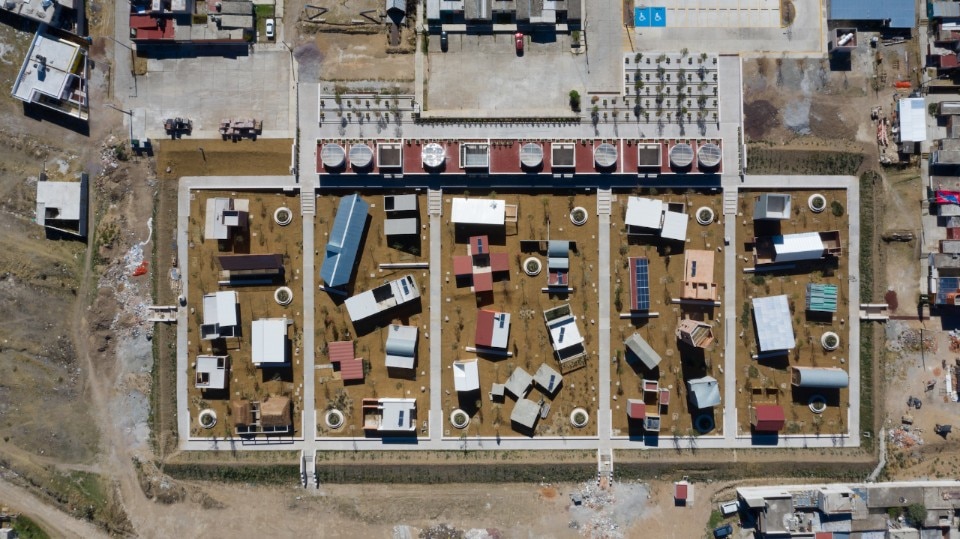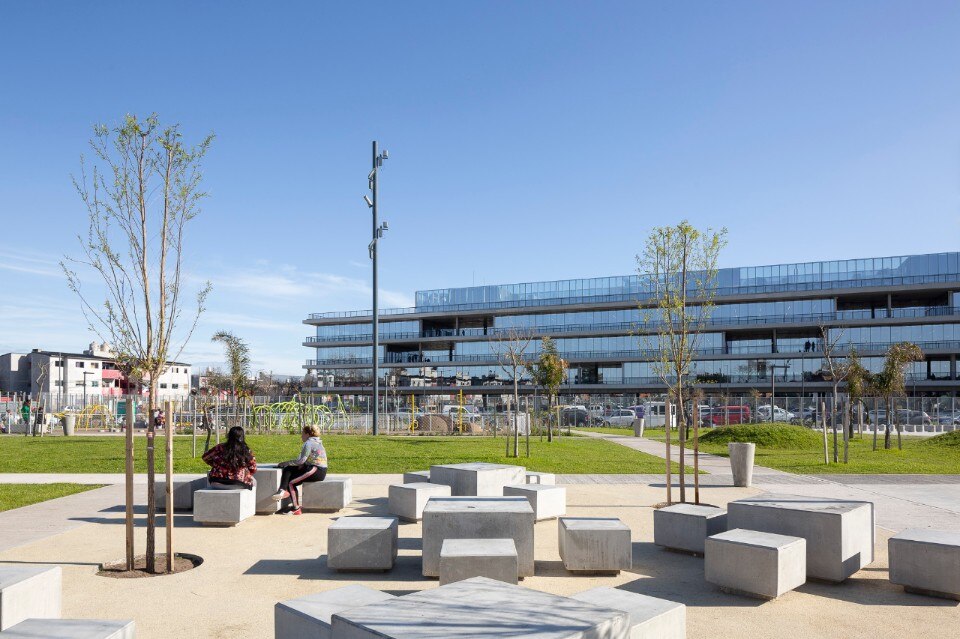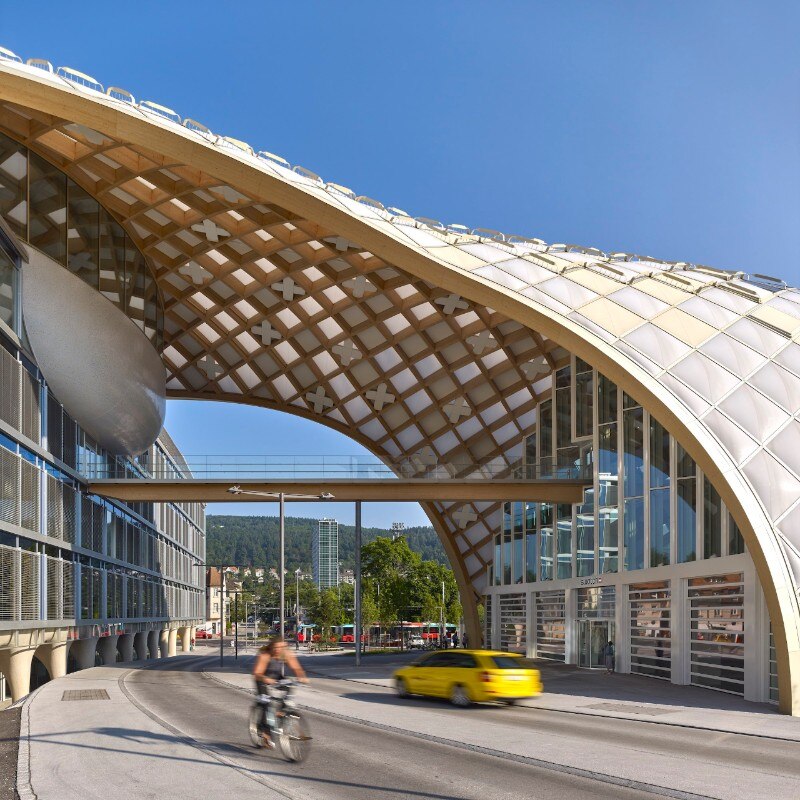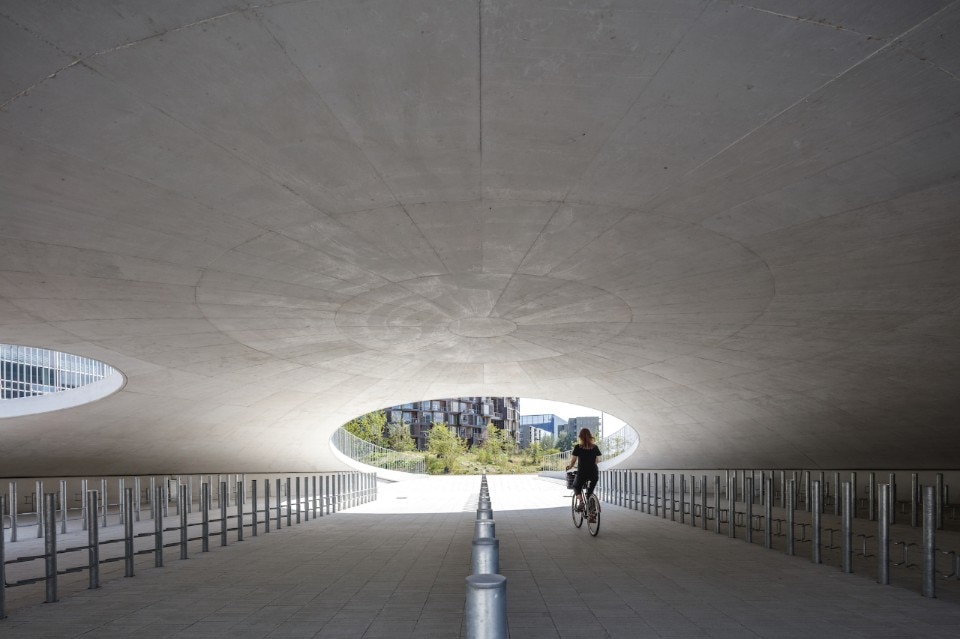Twenty-five years ago, Rem Koolhaas, fresh from his struggles with Euralille, promulgated the theory of “bigness”. Once the scale moved from local to regional to international and global, he realised that no one was totally in charge. The political compromises made with developers, technicians and constantly changing players needed endless arbitrating. In the end, the architect had to follow the flows of power and capital, and learn to “surf” the system. New infrastructure – in the case of Lille: the passing of a high-speed train connecting Paris to London via the Channel Tunnel – frequently presents the pretext for such grand schemes. As Bent Flyvbjerg and his colleagues demonstrated in Megaprojects and Risk: An Anatomy of Ambition (2003), public works such as the Channel Tunnel are systematically underbid, have huge cost overruns, and end up with significantly less demand than predicted. Enormous amounts of money get dumped in these projects, sometimes up to 50 per cent of the budget, and the use, as with the Channel Tunnel, is less than half of what was estimated. In Italy and elsewhere, lurking beneath the high costs and waste is corruption. It is almost axiomatic that the bigger the project the greater the chances of corruption, as witnessed in the six-billion-euro Mose floodgates for the Venetian lagoon, where one billion was syphoned off in kickbacks. The perennial project for the Ponte di Messina, a bridge to connect Sicily with the mainland, has been milking money from public coffers for five decades without producing anything. Even stellar projects such as the Viaduc de Millau by Sir Norman Foster and the French engineer Michel Virlogeux fell into a pattern of hubris and waste. The pylons of the cable-stayed bridge are proudly taller than the Eiffel Tower, but had the structure been built 30 kilometres to the west, only half the height would have been required, at around half the price. When inspired by globalisation, infrastructure tends to be inflationary, confounding notions of necessity with high risk and high waste. The eight-euro toll to use the Millau bridge scares off local users, greatly reducing its utility and making it a stunning end unto itself.

If the current planetary health crisis has taught us anything, it is that we are living in a very fragile moment. While the medical origins of the coronavirus may be traced to flying bats and pangolins, I would reckon that the ulterior cause remains globalisation, for without such pervasive international travel of goods and people the virus might have been contained in Wuhan. Considering that behind the pandemic we have the deeper environmental threats of a climate crisis, perhaps it is time for a different, less globalist criterion for infrastructure. We might try low-impact, community-oriented works. The scale should change from mega to mini. The current economic devastation following the Covid-19 pandemic demands a political and technical response that is both socially and environmentally creative. The mandate for a “Green New Deal” in the US, and the European Union’s agenda for a “Green Deal” might now have an excellent chance to be taken seriously in this new situation of interrupted global markets, which has seen an unprecedented decline of the oil industry and the closing of automobile factories. For all the jobs lost we should demand new jobs in carbon-neutral activities. Coming out of quarantine, we could rethink our priorities and divert public and private financing away from globalisation and consumerist follies toward ecological restoration and the production of local food and energy.
Considering that behind the pandemic we have the deeper environmental threats of a climate crisis, perhaps it is time for a different, less globalist criterion for infrastructure. Instead of wasteful, high- risk, speed-oriented projects, we might try low- impact, community-oriented works. The scale should change from mega to mini
Instead of permitting offshore oil rigs that threaten irremediable damage (see the Deepwater Horizon fiasco of 2010), we could sponsor offshore wind farming, such as the Middelgrunden project in Copenhagen, half of which was financed through citizen investment. Installed in 2000, the 20 wind turbines set 3.5 kilometres outside the port produce 4 per cent of the city’s energy. The oil spill disaster at the end of this May in Norilsk, Russia, in which a storage tank collapsed due to the subsidence of melting permafrost, provides yet another terrifying consequence of carbon fuels.
The poisoning of the waters of the Arctic Circle should discourage any further sympathy for the oil industry. There is no such danger in renewables and a local geothermal plant. The one recently installed for the Clichy-Batignolles neighbourhood in Paris should serve as a model of carbon-neutral alternatives. Opened in 2016, the 50-square-metre transformer has been artfully concealed in the new Martin Luther King Park and supplies the heating and cooling needs of 83 per cent of the 7,500 people living in the neighbourhood as well as for the new Palais de Justice by Renzo Piano. Fracking, perhaps the most deleterious process for obtaining carbon fuels, mercilessly destroys land and forests. In a new green agenda, it could be replaced by infrastructures that renaturalise. Since 1997, the city of Basel has sponsored the Green Roof Initiative, which has yielded the largest amount of green roofs pro capita in the world, improving the thermal performance of buildings while absorbing half the rainwater run-off. The Messe exhibition hall complex, partly designed by Herzog & de Meuron in 2013, is the largest green roof of Basel and combines a sedum plantation with over 8,000 square metres of photovoltaic panels, allowing the entity to sell its excess energy to the city.
I have often written of “infrastructure as art,” moralising that for the huge investment in works of utility, we rarely get very much return in terms of beauty or socialisation. In Curitiba, Brazil, the libraries and parks that accompanied the installation of bus rapid transit stations show one way to achieve art. In the 1990s, Barcelona used the new land of cut-and-cover passages built for the Ronda ring road for playgrounds, libraries and parks, demonstrating a payoff that is both social and artistic. In Medellín, Colombia, the new system of aerial transport by teleferic to poor neighbourhoods always includes new plazas for play and culture.

The idea that infrastructure could generate beneficial collateral effects should be engrained in every mission statement. Infrastructure facilitates the movement of things and people and often pretends to have a certain inevitable demand. Water, sewage and people need to move. But in solving the problem of movement, we also can provide leisure space, play space, decoration, nature and inclusive attractions. One of the stops on the new tram system in Bordeaux, which has greatly reduced the use of automobiles in the city centre, offers a fine example of a democratic attraction. The Miroir d’Eau reflecting pool designed by the late Michel Corajoud and the fountain engineer Jean-Max Llorca sits on the riverbank facing Ange-Jacques Gabriel’s superb Place de la Bourse, its grand 3,450-square-metre surface covered with a thin sheet of water to reflect the historic monuments. During a 15-minute cycle, the granite plain transforms from mists into bubbling jets, creating one of the most refreshing play spaces of our times.
To rethink the scale of infrastructure from global to local would lead to projects where it is easier to comprehend infrastructure as art. The three-month period of confinement that many people endured in Europe and elsewhere brought new value to localism, reinforcing the human dimension. No cars, no trains, no planes, just a few trucks bringing goods to the supermarkets. Perhaps some types of infrastructure will become obsolete. That we might treat them as works of archaeology has already occurred at the Viaduc des Arts in Paris, an elevated rail connecting the Bastille to Gare de Lyon. It is now a planted park. The High Line of New York has done the same. The reforestation of former rail yards in Berlin at Natur-Park Südgelände, and the intense planting at the Jardin Botanique in Bordeaux (a derelict switching yard that now serves as a kilometre-long park) show how brownfield infrastructure can be reworked to achieve the status of art.
While the multinationals need high-speed infrastructure to deliver goods and people from all over the world, one starts to have doubts about things coming from abroad. During the withdrawal, the demand for local products has risen, especially foodstuffs. Rooftop farms such as the 1,000-square meter DakAkker in Rotterdam (the largest in Holland), educational gardens such as Orti Dipinti in Florence, and the regeneration of abandoned lots as urban vegetable plots in Detroit show how leftover spaces can be used to regenerate the city and produce food. The green infrastructure of urban farming is starting to take over in many cities.
The idea that infrastructure could generate beneficial collateral effects should be engrained in every mission statement. Infrastructure facilitates the movement of things and people and often pretends to have a certain inevitable demand. But in solving the problem of movement, we also can provide leisure space, play space, decoration, nature and inclusive attractions
In the aftermath of the pandemic, to move on foot or by bike seems a better option than using public transportation. Private vehicles, while safer from the point of view of contagion, continue to create pollution, which apparently was an important factor in the spread of the virus. Walking can often be challenging in a hot climate or at night, thus more urban trees and subtle safety lights would help. New bicycle infrastructure might take the place of high-speed roads in our priorities of needs. At the station of Freiburg im Breisgau, Germany, there is a wonderful tower for parking over 2,000 bicycles. It has a cafe on the top floor and a bike rental at its base. Photovoltaic panels stick out of the roof like flowers. The new Karen Blixens Plads at the University of Copenhagen conceals parking for 2,000 bikes under a sensual mound, accessed through graceful circles. Copenhagen, where over 70 per cent of the population uses bicycles, leads the way in providing two-way bike paths that privilege the bike over the car.

The energy grid may someday yield to local systems of energy distribution. It is already happening in Auroville, India, and Findhorn, Scotland, but these are rather small populations. In Almere, a new town close to Amsterdam, a solar neighbourhood was built with an oval “island” of over 500 photovoltaic panels supplying energy and heat to 2,700 units. While not yet completely off-grid, it represents the beginning of a system that can keep the energy supply local.
To render garbage a local question rather than exporting it will be one of the great challenges of the future. In Sweden, both at Malmö’s western harbour neighbourhood and Stockholm’s Hammarby Sjöstad district, pneumatic conveyors have been installed to send sorted garbage to local points of composting and incineration. Citizens are issued different coloured sacks, in which they place separated refuse of paper, plastic, metal and organic. Sensors in the tubes recognise the colours and send the bags to the correct collector.
And how shall we deal with our own faeces? It is amazing that this potential source of soil enrichment almost always goes to waste at great expense. In the sewerage-lacking Dharavi, an overpopulated shantytown of Mumbai (backdrop to the movie Slumdog Millionaire in 2008), a campaign to install biodigesters has begun. They are odourless, and produce biogas and compost. The technology is there waiting to be installed, but of all our infrastructure, the sanitation system is perhaps the most difficult to reconceptualise.
While I neither expect that globalisation will retreat without a fight, nor that we will all desire to remain in more confined local situations, there are obvious advantages in slowing down the process of carbon dioxide build-up. This is quite evident from satellite views of big cities from March to May. Still, we may need some megaprojects. As much as I prefer the mini over the mega, there are some large projects that are absolutely necessary, mostly because of the existence of previous high-risk errors. In particular, the most important infrastructure project in Europe is the new shed that encloses Reactor 4 at Chernobyl in Ukraine. Without this immense dome known as the New Safe Confinement (a steel vault with the largest span in history: 257 metres), most of Europe would be polluted by the diffusion of radioactivity. As if to compensate for the lost reactor, they built a photovoltaic solar farm on its edge. This collaborative project completed in 2018, sponsored by 20 countries and designed by engineers from France and Italy, demonstrates how well we perform in an emergency, and this is unfortunately the attitude we need to adopt for the difficult times ahead as global warming starts to kick in.
Opening image: at right, and last page: Karen Blixens Plads in Copenhagen designed in 2019 by Cobe with EKJ Consulting Engineers is the biggest square of the city (20,000 m2) and offers parking space for 2,000 bicycles. Photos Rasmus Hjortshøj


